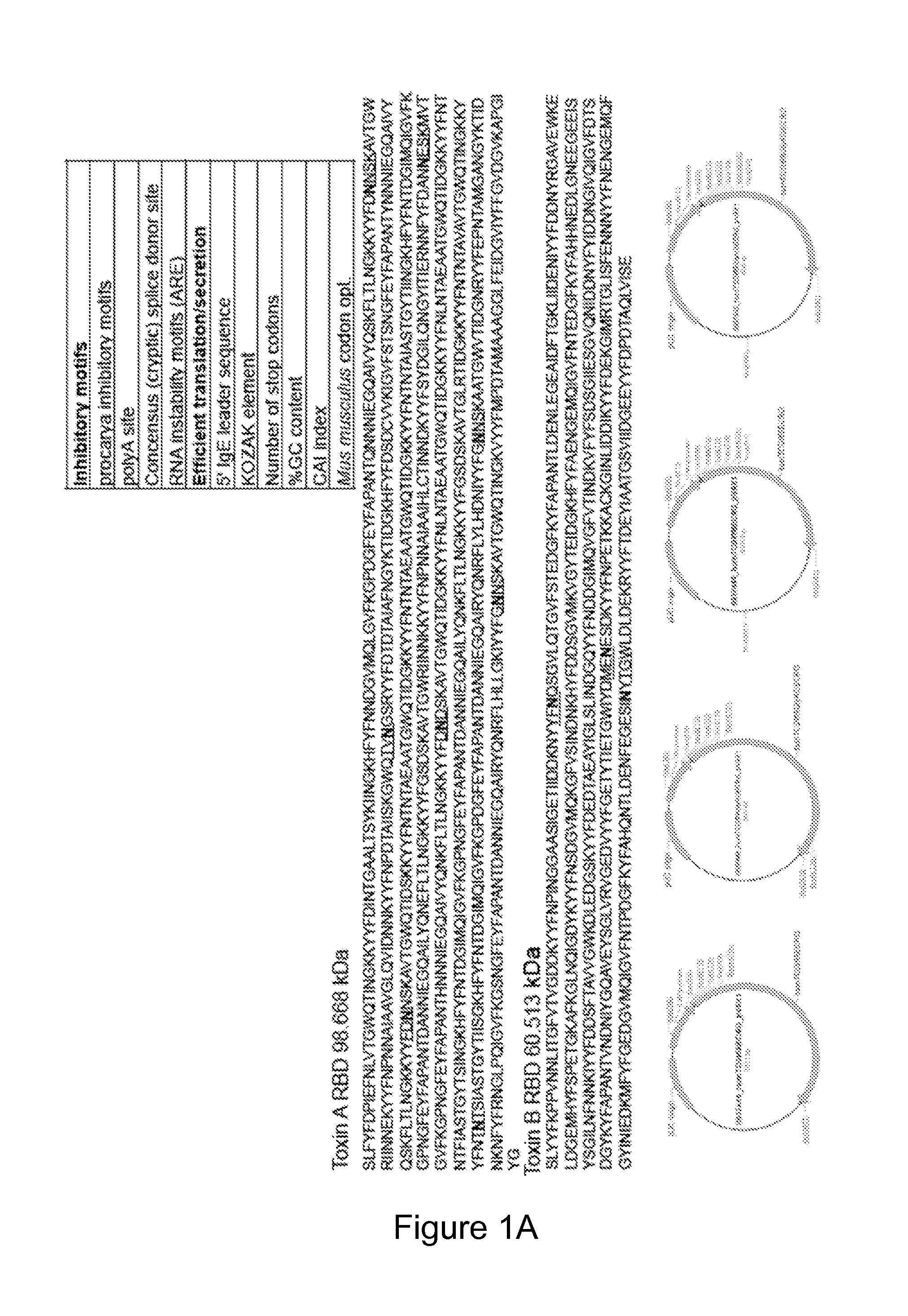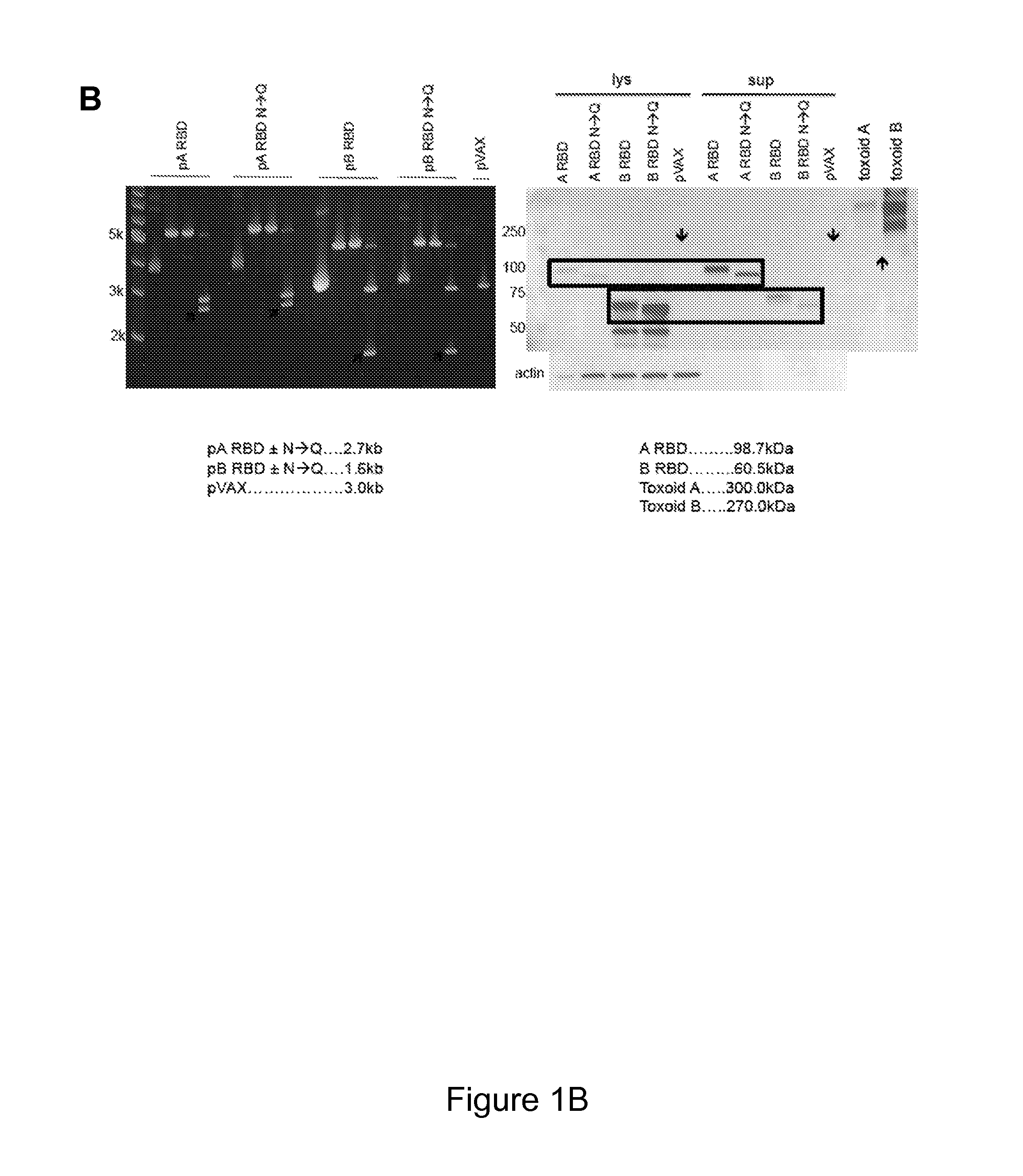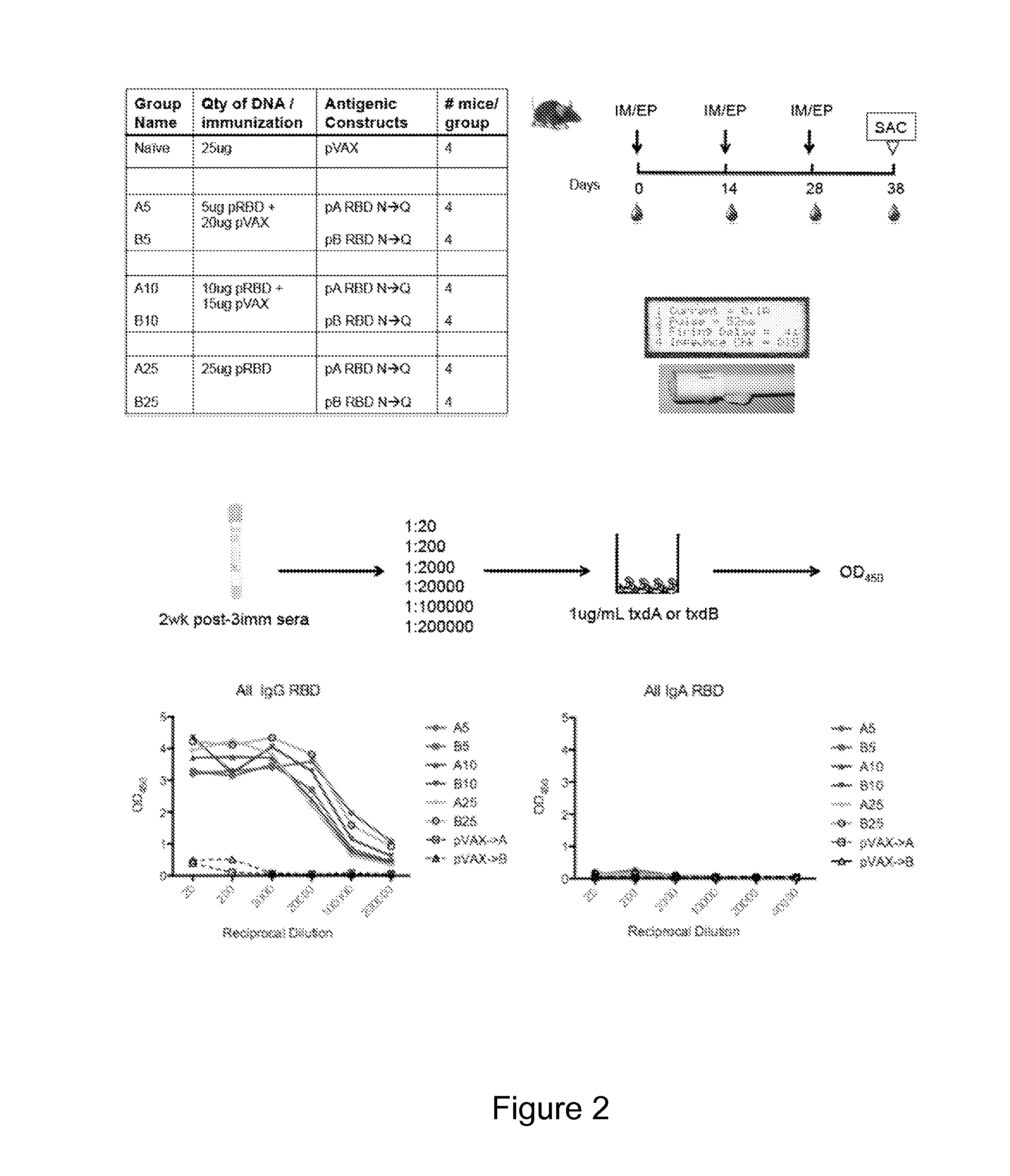Clostridium difficile DNA vaccine
a technology of clostridium difficile and dna vaccine, which is applied in the field of clostridium difficile dna vaccine, can solve the problems of limiting the effectiveness of clinic-based immune-based therapies against i>c. difficile/i>, potential life-threatening complications, and unfulfilled clinical indications
- Summary
- Abstract
- Description
- Claims
- Application Information
AI Technical Summary
Benefits of technology
Problems solved by technology
Method used
Image
Examples
experimental examples
[0152]The invention is further described in detail by reference to the following experimental examples. These examples are provided for purposes of illustration only, and are not intended to be limiting unless otherwise specified. Thus, the invention should in no way be construed as being limited to the following examples, but rather, should be construed to encompass any and all variations which become evident as a result of the teaching provided herein.
[0153]Without further description, it is believed that one of ordinary skill in the art can, using the preceding description and the following illustrative examples, make and utilize the compounds of the present invention and practice the claimed methods. The following working examples therefore, specifically point out the preferred embodiments of the present invention, and are not to be construed as limiting in any way the remainder of the disclosure.
[0154]The materials and methods employed in the Examples are now described.
Plasmid ...
example 1
Development of an Optimized DNA-Based Vaccine that Encodes Toxin A and Toxin B Receptor Binding Domains of C. difficile Delivered Through Intramuscular Route Followed by Electrostimulation
Construction and Expression of C. difficile RBD Plasmids
[0162]Highly optimized plasmids were designed based on the toxin A (TcdA) and toxin B (TcdB) of C. difficile in combination with novel plasmid-based mucosal chemokines. For generation of highly optimized antigenic constructs, the full-length amino acid sequence corresponding to the Toxin A and B proteins of C. difficile strain VPI 10463 (NCBI AAA23283) were identified; the residues corresponding to the amino-acid sequence of the putative receptor-binding domain (RBD) known to occupy the carboxy-terminal third of the protein was back-translated in silico to a novel genetic sequence. Gene modifications were introduced to enhance protein expression including codon optimization (for human), addition of an effective secretory leader (IgE), KOZAK co...
example 2
Development of a Novel DNA Vaccine for the Prevention of CDAD
[0170]Described herein is the creation of highly optimized plasmids encoding RBD from toxin A and toxin B, where putative N-linked glycosylation sites were altered. Antigen DNA modifications included herein are summarized in FIG. 9A. A plasmid map displaying key components of pVAX is shown in FIG. 9A. Four plasmids, encoding A or B RBD wt and A or B RBD N→Q were optimized and constructed. Putative N-linked glycosylation sites in the RBD of toxins A and B are underlined as shown in FIG. 9B. At these sites, Gln (Q) was substituted for the first Asn (N) during construction of the DNA vaccine plasmids. To verify expression, 293T cells (3.0×105 cells) were transfected with 2 μg of pRBD N→Q constructs using Lipofectamine 2000. Forty-eight hours post-transfection, lysates (RIPA buffer) and supernatants were harvested, fractionated on SDS-PAGE (4-12%), and transferred to PVDF membrane. Immunodetection was performed with specific m...
PUM
| Property | Measurement | Unit |
|---|---|---|
| volume | aaaaa | aaaaa |
| length | aaaaa | aaaaa |
| length | aaaaa | aaaaa |
Abstract
Description
Claims
Application Information
 Login to View More
Login to View More - R&D
- Intellectual Property
- Life Sciences
- Materials
- Tech Scout
- Unparalleled Data Quality
- Higher Quality Content
- 60% Fewer Hallucinations
Browse by: Latest US Patents, China's latest patents, Technical Efficacy Thesaurus, Application Domain, Technology Topic, Popular Technical Reports.
© 2025 PatSnap. All rights reserved.Legal|Privacy policy|Modern Slavery Act Transparency Statement|Sitemap|About US| Contact US: help@patsnap.com



